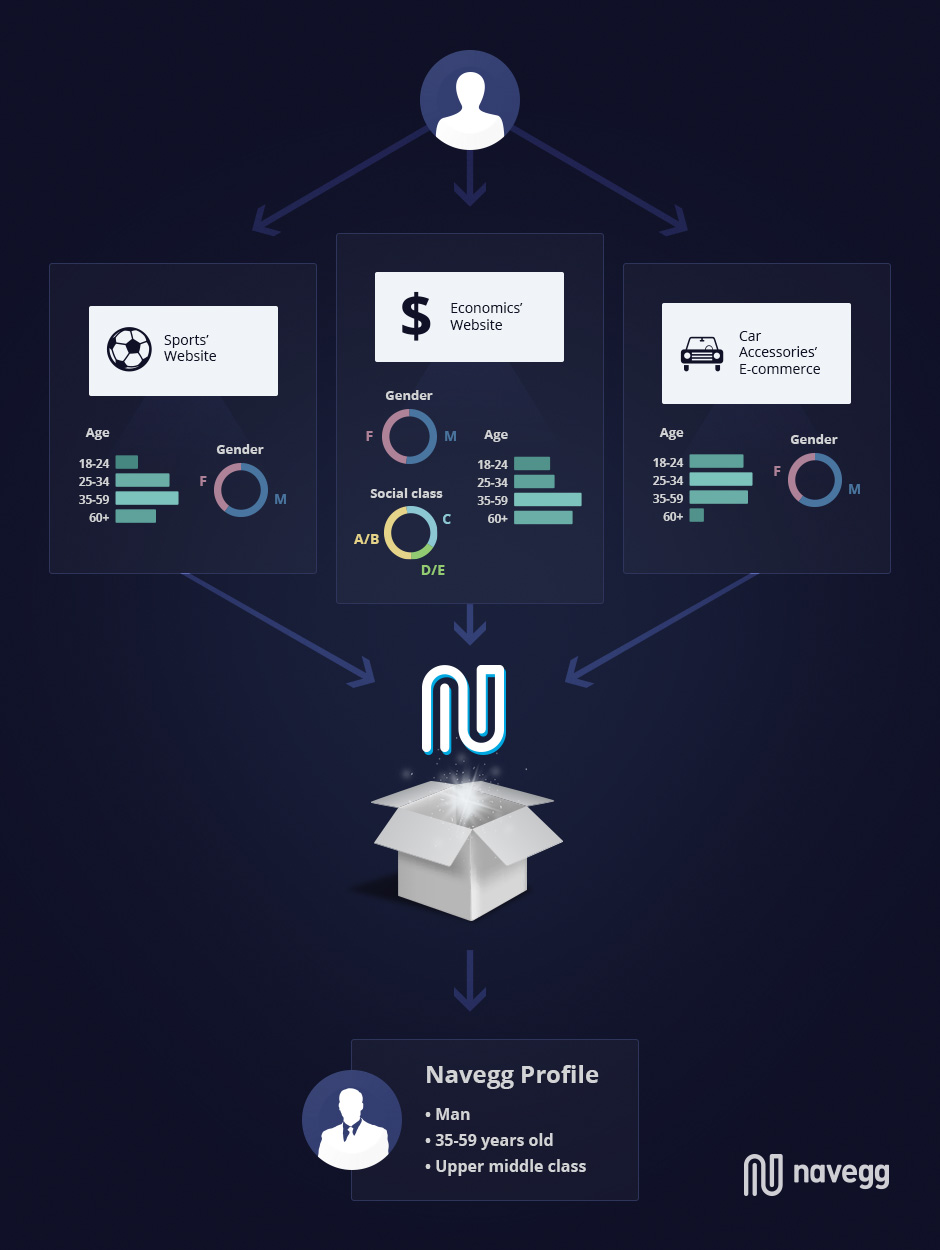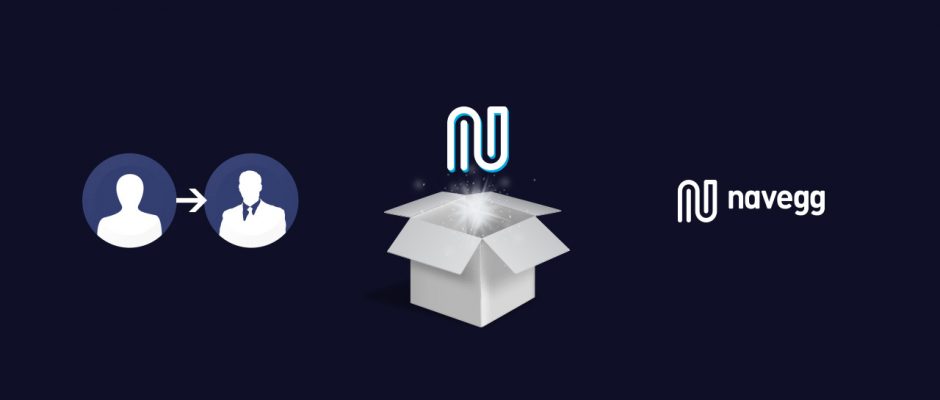Navegg’s core work lies in understanding online consumer behavior. They are classified into more than 1,400 segments. Among these classifications are demographic data, purchase intention, technologies used and other details. The information that Navegg can obtain about the Internet user – Navegg’s data – is divided into three types:
1 – Observed data
This type of data is observed during the user’s navigation, while accessing websites. It has three sub-classifications:
1.1 The ones that are immutable. For example:
- Technology used (device, operating system, browser)
- Connection type
1.2 The ones that are based on the internet user’s affinity with a subject. For example:
- Interests
- Brands’ affinity
1.3 The ones that are temporary because they are related to a momentary desire or need, in other words, segments that will be extinguished by the time the purchase is completed. For example:
- Purchase intention
2 – Inferred Data
Not all data can be observed. In order to not depend on this limited option, it is possible to infer this information based on navigation behavior analysis. To run this analysis, Navegg has a proprietary algorithm that uses as input each category of content seen by the user.
For example: People who access sports’ content are mostly men, 35-59 years old. On the other hand, people who buy car accessories on the internet are men, mostly from 18 to 59 years. However, who access news about economy, are typically people older than 35 years old and are considered upper middle class.

After analyzing the accumulated information about the person’s online behavior, the inference algorithm considers each content and their demographic patterns and determines – with a high degree of assertiveness – what is the person’s profile.
In the given example, the person would be a man, 35 to 59 years old and upper middle class. It is important to highlight that demographics’ patterns associated with each content are based on third-party market research, which is a methodology that uses registered user panel.
The segments that fall into this category are:
- Gender
- Age group
- Social class
- Marital status
- Education
- Occupation area
3 – Behavioral Data
It is a mix of observed and inferred data plus a behavioral analysis layer. By analyzing all the data two methodologies were created:
- Navegg Everyone – Eight homogeneous groups considering behavior, using internet users’ reactions to rational and emotional stimuli associated to consumer purchasing power, both with support of classic psychosocial methodologies such as the Pyramid of Maslow and the Adoption Curve.
- Navegg Everybuyer – In order to develop the methodology, Navegg identified aspects such as income, emotional factors, quality of life, knowledge about the product or industry, trends and life stage. Based on that information, we found out the different factors that influence their acquisition behavior in each of the 13 industries.




